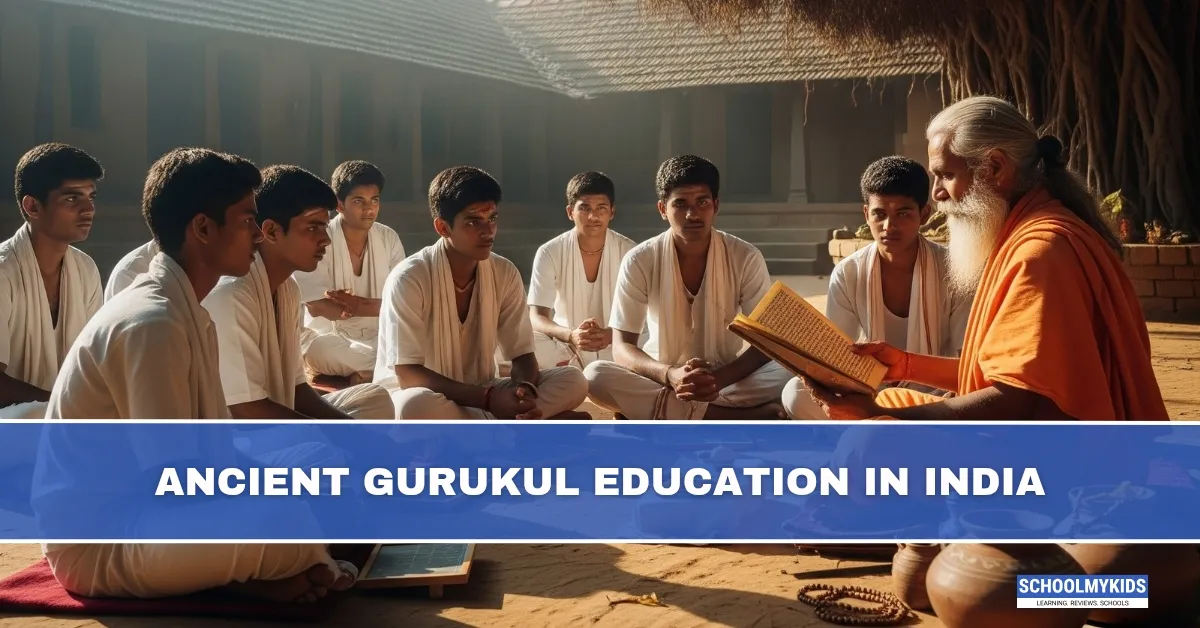The Gurukul system was the backbone of education in ancient India. In this model, students (shishyas) lived with their teacher (guru) in a residential setting, often in natural surroundings. Education wasn’t just about memorising facts — it was about shaping character, discipline, and life skills.
While the world has shifted towards digital classrooms, online courses, and skill-based training, the Gurukul philosophy still offers timeless values. If combined thoughtfully with modern systems, it could create a powerful hybrid education model.
Values Students Can Learn from the Ancient Gurukul System
- Respect for Teachers and Learning: In the Gurukul, the guru wasn’t just an instructor — they were a mentor, role model, and guide for life. Respect for knowledge and those who impart it created a deep commitment to learning.
- Holistic Development: Education included academic learning, moral values, physical training, and spiritual growth. Students learned music, philosophy, astronomy, self-defence, agriculture, and ethics — developing into well-rounded individuals.
- Discipline and Simplicity: Life in the Gurukul was simple. Students performed daily chores, maintained cleanliness, and followed routines — habits that build self-reliance and responsibility.
- Community Living and Collaboration: Living together taught empathy, teamwork, and conflict resolution. Learning wasn’t competitive in a harmful way; it was about growing together.
- Learning by Doing: Instead of only theoretical lessons, students learned through hands-on experience — from farming to observing nature — which strengthened practical understanding.
What Needs to Change for Today’s World
While the Gurukul values are powerful, the old system had limitations when viewed through a modern lens. To make it relevant now, some changes are essential:
- Inclusion of Modern Subjects: Ancient education focused heavily on religious texts, philosophy, and traditional sciences. A hybrid system must include STEM subjects, digital literacy, and global awareness alongside cultural learning.
- Equal Access for All: Historically, the Gurukul system was not equally accessible to everyone due to social hierarchies. The modern version must ensure universal access regardless of gender, caste, or background.
- Critical Thinking Over Blind Obedience: Respect for the guru should be balanced with independent thinking. Students should be encouraged to question, debate, and innovate rather than only follow.
- Integration of Technology: Just as Gurukuls used oral traditions, today’s hybrid model can use digital classrooms, virtual labs, and AI tools to supplement in-person mentorship.
- Adaptability to Careers and Industry: The old system prepared students for spiritual and social duties. Today’s version should also prepare them for modern careers, entrepreneurship, and problem-solving in real-world contexts.
The Hybrid Gurukul Model – Best of Both Worlds
A reimagined Gurukul for the 21st century could look like this:
- Residential mentorship (short-term or long-term) to teach discipline, teamwork, and life skills
- Online access to lectures and resources for academic flexibility
- Skill-based workshops in arts, sports, science, and entrepreneurship
- Moral and ethical education integrated with modern syllabus
- Sustainable living practices to teach environmental responsibility
Conclusion
The ancient Gurukul system’s core values — respect for teachers, holistic growth, discipline, and learning through experience — are as relevant today as they were thousands of years ago.
By blending these timeless principles with modern subjects, inclusive access, and technology, we can create an education model that develops not just employable graduates but thoughtful, ethical, and capable human beings.








Be the first one to comment on this story.